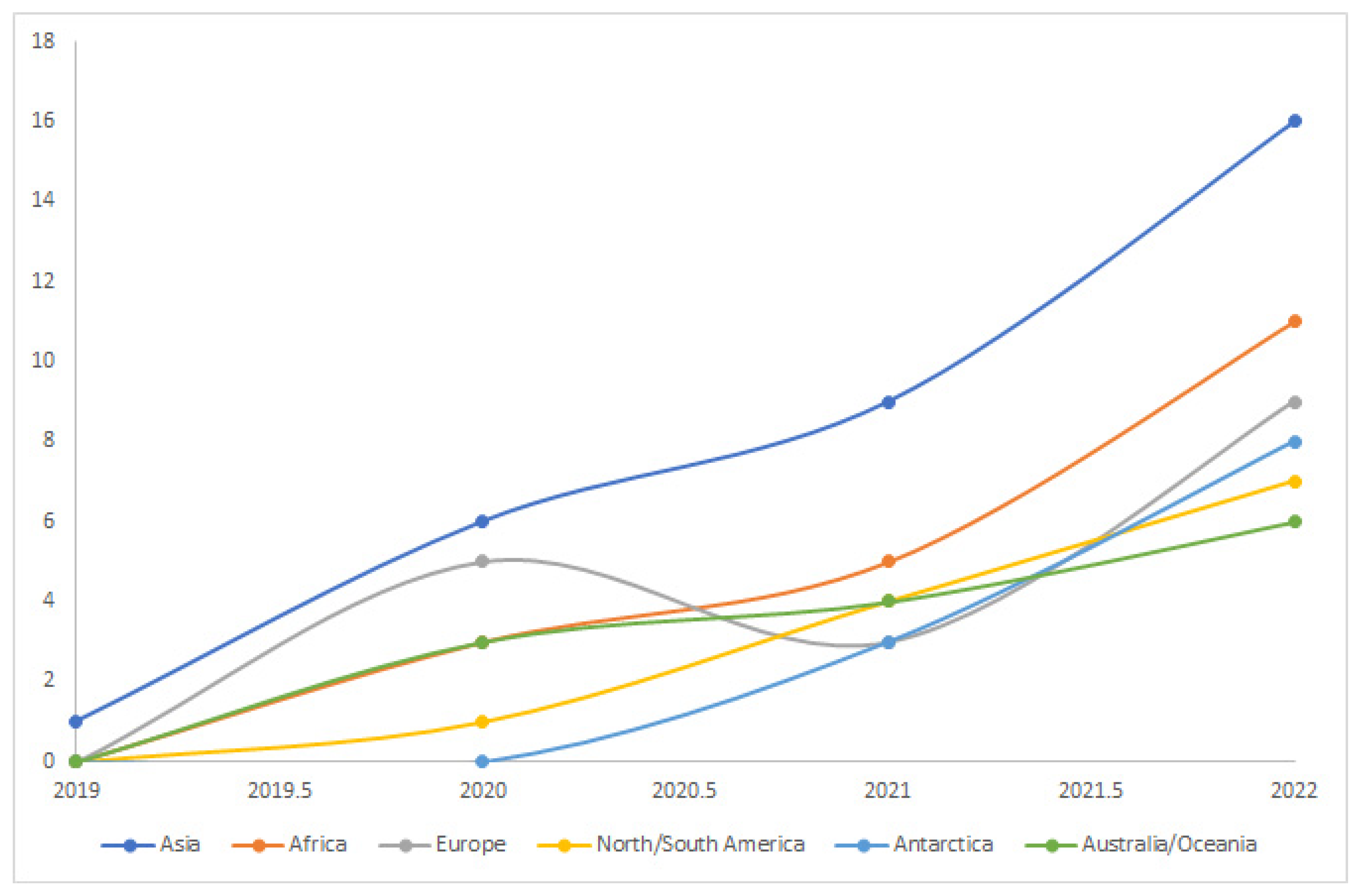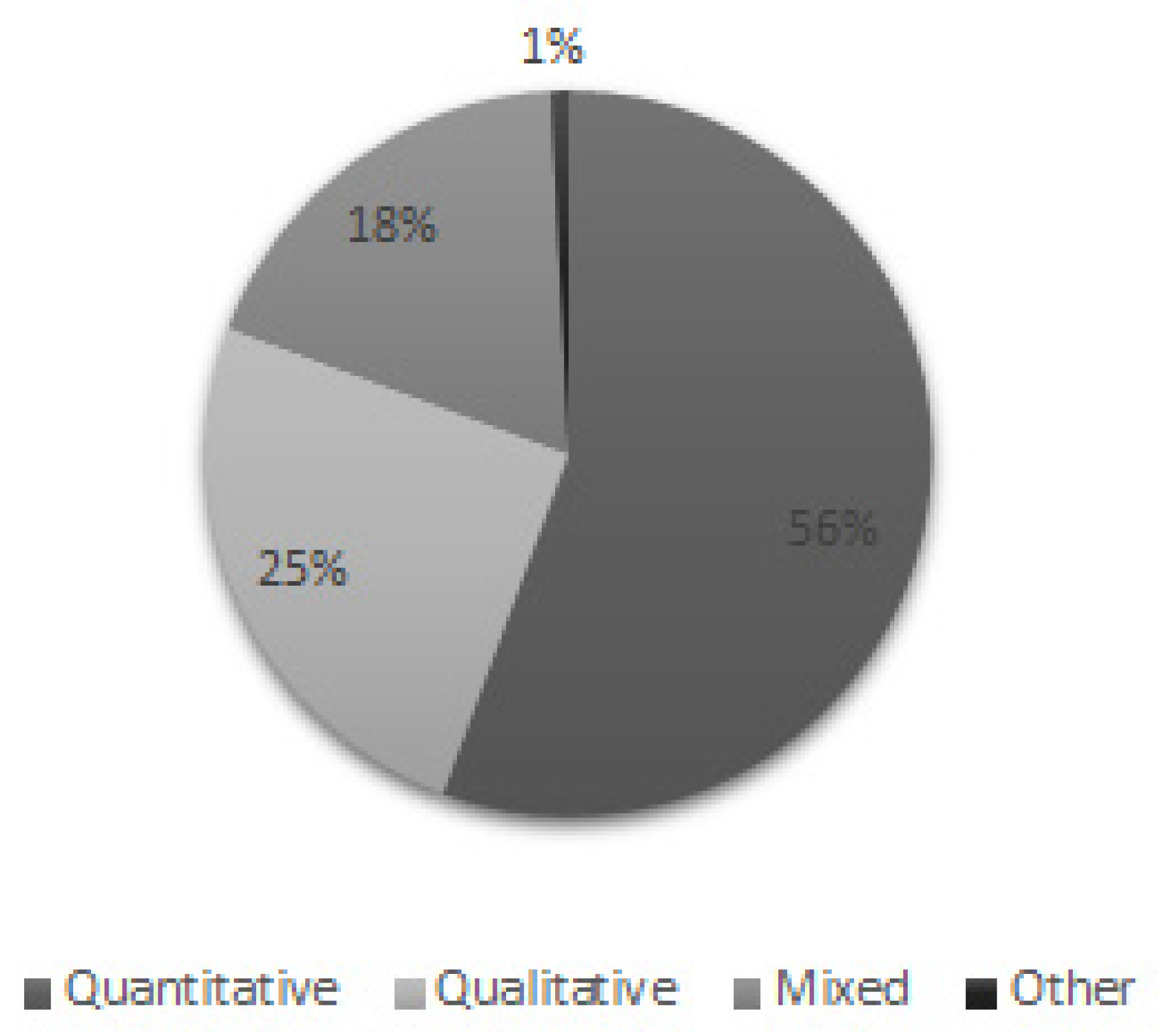Systematic Review of Fuzzy Scales for Multiple Criteria Decision-Making Issues during COVID-19 †
Abstract
:1. Introduction
2. Literature Review
3. Methodology
- (1)
- Systematic review of the literature (Section II);
- (2)
- Data collection: Scopus and Web of Science (WoS) were utilized to collect the necessary data (Section A);
- (3)
- Data screening: using a quantitative approach, formal aspects of the collected data were evaluated and examined (Section A);
- (4)
- Applied techniques: bibliometric analysis and a review of the academic studies of MCDM issues were conducted during COVID-19 (Section IV).
Data Collection
4. Result and Discussions
4.1. Prevalence
4.2. Bibliometric Analysis
5. Conclusions and Future Directions
Author Contributions
Funding
Institutional Review Board Statement
Informed Consent Statement
Data Availability Statement
Conflicts of Interest
References
- Mishra, A.R.; Rani, P.; Krishankumar, R.; Ravichandran, K.S.; Kar, S. An extended fuzzy decision-making framework using hesitant fuzzy sets for the drug selection to treat the mild symptoms of Coronavirus Disease 2019 (COVID-19). Appl. Soft. Comput. 2021, 103, 107155. [Google Scholar] [CrossRef] [PubMed]
- Paul, A.; Shukla, N.; Paul, S.K.; Trianni, A. Sustainable supply chain management and multi-criteria decision-making methods: A systematic review. Sustainability 2021, 13, 7104. [Google Scholar] [CrossRef]
- Maêda, N.; Rodrigues, M.V.G.; Ângelo, M.; Moreira, L.; Gomes, C.F.S.; dos Santos, M. Bibliometric Studies on Multi-Criteria Decision Analysis (MCDA) Applied in Personnel Selection. In Modern Management Based on Big Data II and Machine Learning and Intelligent Systems III: Proceedings of MMBD 2021 and MLIS 2021; IOS Press BV: Amsterdam, The Netherlands, 2021; Volume 341, p. 119. [Google Scholar]
- Gao, Z.; Jiang, Y.; He, J.; Wu, J.; Xu, J.; Christakos, G. An AHP-based regional COVID-19 vulnerability model and its application in China. Model. Earth Syst. Environ. 2022, 8, 2525–2538. [Google Scholar] [CrossRef] [PubMed]
- Nalluri, V.; Huynh-Cam, T.; Sama, H.; Chen, L. Decision-making model for the effective e-services adoption in the Indian educational organizations. Decis. Sci. Lett. 2023, 12, 211–224. [Google Scholar] [CrossRef]
- Hou, L.X.; Mao, L.X.; Liu, H.C.; Zhang, L. Decades on emergency decision-making: A bibliometric analysis and literature review. Complex Intell. Syst. 2021, 7, 2819–2832. [Google Scholar] [CrossRef]
- Erol, I.; Ar, I.M.; Peker, I. Scrutinizing blockchain applicability in sustainable supply chains through an integrated fuzzy multi-criteria decision making framework. Appl. Soft Comput. 2022, 116, 108331. [Google Scholar] [CrossRef]
- Ortiz-Barrios, M.; Borrego-Areyanes, A.A.; Gómez-Villar, I.D.; De Felice, F.; Petrillo, A.; Gul, M.; Yucesan, M. A multiple criteria decision-making approach for increasing the preparedness level of sales departments against COVID-19 and future pandemics: A real-world case. Int. J. Disaster Risk Reduct. 2021, 62, 102411. [Google Scholar] [CrossRef]
- Sama, H.R.; Chen, L.S.; Nalluri, V.; Chendragiri, M. Enhancing service quality of rural public transport during the COVID-19 pandemic: A novel fuzzy approach. Public Transp. 2023, 15, 479–501. [Google Scholar] [CrossRef]
- Ocampo, L.; Tanaid, R.A.; Tiu, A.M.; Selerio Jr, E.; Yamagishi, K. Classifying the degree of exposure of customers to COVID-19 in the restaurant industry: A novel intuitionistic fuzzy set extension of the TOPSIS-Sort. Appl. Soft Comput. 2021, 113, 107906. [Google Scholar] [CrossRef]
- Rani, P.; Mishra, A.R. Interval-valued fermatean fuzzy sets with multi-criteria weighted aggregated sum product assessment-based decision analysis framework. Neural Comput. Appl. 2022, 34, 8051–8067. [Google Scholar] [CrossRef]
- Ayyildiz, E.; Taskin, A. A novel spherical fuzzy AHP-VIKOR methodology to determine serving petrol station selection during COVID-19 lockdown: A pilot study for İstanbul. Socio-Econ. Plan. Sci. 2022, 83, 101345. [Google Scholar] [CrossRef] [PubMed]
- Saad Menezes, M.C.; Santinelli Pestana, D.V.; Ferreira, J.C.; Ribeiro de Carvalho, C.R.; Felix, M.C.; Marcilio, I.O.; HCFMUSP COVID-19 Study Group. Distinct Outcomes in COVID-19 Patients with Positive or Negative RT-PCR Test. Viruses 2022, 14, 175. [Google Scholar] [CrossRef] [PubMed]
- Özkan, B.; Özceylan, E.; Kabak, M.; Dikmen, A.U. Evaluation of criteria and COVID-19 patients for intensive care unit admission in the era of pandemic: A multi-criteria decision making approach. Comput. Methods Programs Biomed. 2021, 209, 106348. [Google Scholar] [CrossRef] [PubMed]
- Hezer, S.; Gelmez, E.; Özceylan, E. Comparative analysis of TOPSIS, VIKOR and COPRAS methods for the COVID-19 Regional Safety Assessment. J. Infect. Public Health 2021, 14, 775–786. [Google Scholar] [CrossRef]
- Farhadinia, B. A Divergence-Based Medical Decision-Making Process of COVID-19 Diagnosis. Math. Probl. Eng. 2022, 2022, 7685033. [Google Scholar] [CrossRef]
- Moreira, M.Â.L.; Gomes, C.F.S.; Dos Santos, M.; da Silva Júnior, A.C.; de Araújo Costa, I.P. Sensitivity Analysis by the PROMETHEE-GAIA method: Algorithms evaluation for COVID-19 prediction. Procedia Comput. Sci. 2022, 199, 431–438. [Google Scholar] [CrossRef]
- Forestal, R.L.; Pi, S.M. A hybrid approach based on ELECTRE III-genetic algorithm and TOPSIS method for selection of optimal COVID-19 vaccines. J. Multi-Criteria Decis. Anal. 2022, 29, 80–91. [Google Scholar] [CrossRef]
- Karuppiah, K.; Sankaranarayanan, B.; Ali, S.M.; Paul, S.K. Key challenges to sustainable humanitarian supply chains: Lessons from the COVID-19 pandemic. Sustainability 2021, 13, 5850. [Google Scholar] [CrossRef]
- Ciampi, F.; Giannozzi, A.; Marzi, G.; Altman, E.I. Rethinking SME default prediction: A systematic literature review and future perspectives. Scientometrics 2021, 126, 2141–2188. [Google Scholar] [CrossRef]
- Gul, M.; Guneri, A.F. Hospital location selection: A systematic literature review on methodologies and applications. Math. Probl. Eng. 2021, 2021, 6682958. [Google Scholar] [CrossRef]
- Dohale, V.; Akarte, M.; Gunasekaran, A.; Verma, P. Exploring the role of artificial intelligence in building production resilience: Learnings from the COVID-19 pandemic. Int. J. Prod. Res. 2022, 61, 1–22. [Google Scholar] [CrossRef]
- Zhong, M.; Lin, M. Bibliometric analysis for economy in COVID-19 pandemic. Heliyon 2022, 8, e10757. [Google Scholar] [CrossRef] [PubMed]


| Region | Country | Number of Articles |
|---|---|---|
| Asia | China, India | 67 |
| Africa | Southern Africa, Cabo Verde | 24 |
| Europe | United Kingdom | 8 |
| North/South America | USA | 6 |
| Australia/Oceania | Australia, Samoa | 19 |
Disclaimer/Publisher’s Note: The statements, opinions and data contained in all publications are solely those of the individual author(s) and contributor(s) and not of MDPI and/or the editor(s). MDPI and/or the editor(s) disclaim responsibility for any injury to people or property resulting from any ideas, methods, instructions or products referred to in the content. |
© 2023 by the authors. Licensee MDPI, Basel, Switzerland. This article is an open access article distributed under the terms and conditions of the Creative Commons Attribution (CC BY) license (https://creativecommons.org/licenses/by/4.0/).
Share and Cite
Nalluri, V.; Wang, Y.-Y.; Chen, L.-S. Systematic Review of Fuzzy Scales for Multiple Criteria Decision-Making Issues during COVID-19. Eng. Proc. 2023, 55, 30. https://doi.org/10.3390/engproc2023055030
Nalluri V, Wang Y-Y, Chen L-S. Systematic Review of Fuzzy Scales for Multiple Criteria Decision-Making Issues during COVID-19. Engineering Proceedings. 2023; 55(1):30. https://doi.org/10.3390/engproc2023055030
Chicago/Turabian StyleNalluri, Venkateswarlu, Yi-Yun Wang, and Long-Sheng Chen. 2023. "Systematic Review of Fuzzy Scales for Multiple Criteria Decision-Making Issues during COVID-19" Engineering Proceedings 55, no. 1: 30. https://doi.org/10.3390/engproc2023055030
APA StyleNalluri, V., Wang, Y.-Y., & Chen, L.-S. (2023). Systematic Review of Fuzzy Scales for Multiple Criteria Decision-Making Issues during COVID-19. Engineering Proceedings, 55(1), 30. https://doi.org/10.3390/engproc2023055030







